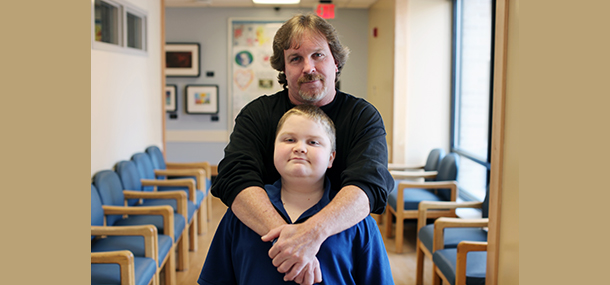
Duchenne Muscular Dystrophy (DMD) is a rare disorder present in males from birth. It is often transmitted by a genetic mutation, which is a change in the make-up of the gene, and slowly causes muscles to weaken. Symptoms can be detected in babies, and these boys are usually diagnosed by the age of 6. Even though there is no known cure, there are some medical treatments available to help slow the process and give hope to families and patients affected by this disorder.
Dr. Hee Kim and the team of researchers at Cincinnati Children’s have focused on developing better imaging techniques, allowing us to evaluate the disease process more accurately. A 45-minute MRI is used to take pictures of the thighs, helping doctors to evaluate how well the muscle is able to function. The team is also using this research to help find therapeutic ways to stop the disease.
Some of the strongest supporters of the research are from the Foundation to Eradicate Duchenne, which was developed by parents of boys with DMD hoping to find new therapeutic ways to cure the disease. They have raised millions of dollars for research and have never stopped fighting to find a cure.
Dr. Kim and her research team in Radiology, along with colleagues in the neurology department, will continue moving forward to find a way to stop DMD. Along with the support of parents, patients, families and foundations, great strides in research will continue to give hope to all those affected by this disorder.
Contributed by Dr. Hee Kim and edited by Bessie Ganim (Nuc-Technologist).